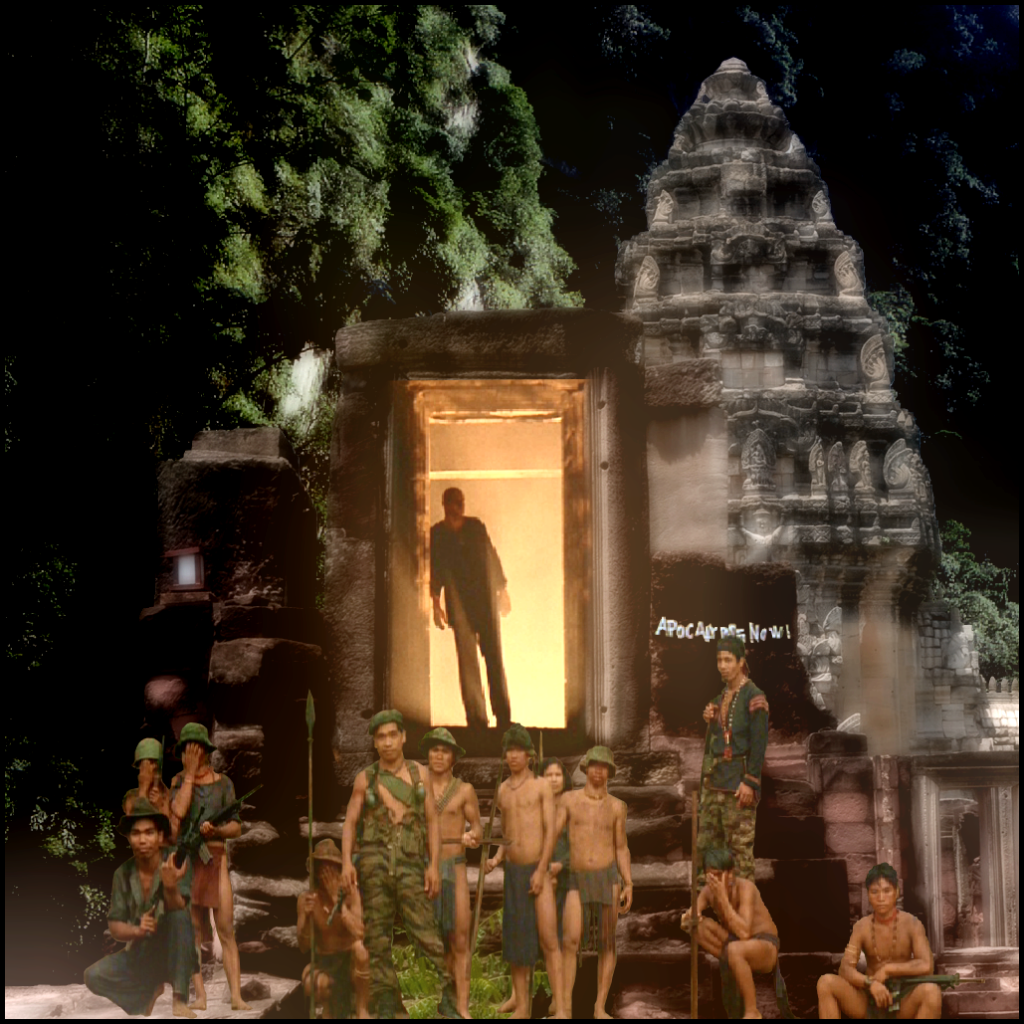In Arts One this week we discussed Conrad’s Heart of Darkness and Coppola’s Apocalypse Now. It was really challenging trying to talk about everything we wanted to discuss about both works, in two seminars (1 hr 20 minutes each, but still…). One thing I asked towards the end of class yesterday was something like:
What can film do that a book with just words can’t do, or can’t do as well? And how can we see that in Apocalypse Now?
I had a few ideas, and I heard some of the small groups in class yesterday giving a few others. The more I think about it, the more I wonder if the things I thought of couldn’t be done in text alone (some of them could, in ingenious ways), but here are some things I thought film does especially well in comparison to written texts without images.
Visuals
Obviously, film has the benefit of visual images different from just the visuals of words. One thing that stood out to me in Coppola’s film is how we can get meaning just from the way the images are and work together.
For example, we can get a sense that Willard and Kurtz are in some ways the same, or at least similar, by:
- In the scene in which the water buffalo is killed, and Kurtz is killed, towards the beginning we see Kurtz standing in the doorway looking out over the sacrificial ceremony, then going inside. Then after Willard kills him we see Willard standing in the doorway, looking out over the people who were conducting the ceremony. The shots aren’t exactly the same, as Kurtz is in shadow, backlit, and Willard is lit by the front, but he’s in the same place, facing the same people–who then bow down to him as they did to Kurtz. My point is that putting them in pretty much the same position in a shot can communicate a lot, even if nothing else were to happen to make us see them as similar.

Ruins–Apocalypse Now, Flickr photo by Ian Burt, licensed CC BY 2.0.
- At the very end, after Willard and Lance leave Kurtz’s compound, we get a juxtaposed shot of Willard’s face and the image of the statue in Kurtz’s compound. That statue was associated with Kurtz–it was being shown while Kurtz was reading Eliot’s “The Hollow Men.” At the end, Willard’s eye moves to be superimposed onto the statue’s eye, which to me suggests a melding of Willard and Kurtz.
- Also, at the beginning, we get a shot of Willard’s face while he is in the hotel room, on the left of the screen while there are various things on the right, one of which is that statue again. In the beginning, Willard’s face is upside down, but at the end his face is right-side-up next to the statue before his eye becomes superimposed onto it. This might suggest a kind of disconnect between Willard and Kurtz at the beginning, but more of a connection at the end.
Lighting
A great deal can be shown by particular choices of lighting in an image or a film. One thing that really struck me in this regard was the Do Lung Bridge scene, where the light comes only in flashes, so you see a little bit and then you’re back in darkness; then there’s a little light, then darkness. A number of meanings might be connected with this, such as that at that point, they are on the border between order and chaos. That’s the last army outpost on the river, if I remember correctly (“beyond it was only Kurtz,” or something like that), and there is a very tenuous grasp on order and military activity. There is no clear commanding officer, but people are still fighting. There’s a veneer of doing what they’re supposed to do–they keep blowing up the bridge but the army keeps rebuilding it so they can say the road is open. The flashing of light and mostly darkness can express this borderline between things happening as they should and utter chaos.
Music
One thing that can really stand out in a film as providing another layer of meaning or evoking feeling is the background music. I didn’t pay as great of attention to this as to other things, but one thing that stands out is the silence after Willard kills Kurtz and comes out of the building to face the rest of the people. It’s completely silent except for the crickets, even though there was loud music before that (The Doors’ “The End”). Then we just get the rain as Willard and Lance move away in the boat. Willard even turns off the radio when “Almight” is calling for them on it. For me, this suggests perhaps that this is “the end” for Willard. There is nothing left for him–no military, no Kurtz, no Kurtz’s voice (in the book he is nothing but a voice, so silence would make sense), no nothing. But I don’t feel strongly about this interpretation; there are likely other interesting things to say about this silence!
I also wanted to say something about the song “The End,” as was discussed in the lecture on this film. The thing that struck me about it is that we get it both at the end of the film and at the beginning. That seems rather paradoxical–the end at the beginning? Or better, it’s circular. This is not actually the end; not the end of the war in the context of the storyline in the film, of course, nor the end of people like Kurtz, nor the end of insane wars altogether. It will just start again. Which, yes, goes a bit against my point in the previous paragraph about this being the end for Willard, which is partly why I’m not that thrilled about that interpretation!
These are the things I came up with on first thinking of this question…curious if others have other ideas!